What Would You Set Up To Collect How Many Comments
You've been there: your boss asks how the business's social media strategy is doing and you know a high-level rundown just won't cut it. When it comes to measuring and proving your brand's social media success, data speaks volumes — and that's where social media KPIs come in.
Social media KPIs are measurable metrics that reflect social media performance and prove social's ROI for a business. Put another way, tracking specific numbers allows your social team to ensure its social strategy is connecting with the target audience and that your brand is achieving its business goals.
Plus, tracking social media KPIs makes reporting back to your boss easier — it's a reliable way to prove to your supervisors that your social media strategy is working.
Keep reading to find out more about different types of social media KPIs and how to track them.
Bonus: Get a free social media report template to easily track and measure performance against your KPIs.
KPI stands for key performance indicators.
Businesses use KPIs to determine performance over time, see if goals are being met and analyze whether changes need to be made.
Social media KPIs are the metrics used to determine if a business's social media marketing strategy is effective. Basically, they're tracked data related to a company's presence on individual platforms like Facebook, Twitter or Instagram, or across all social platforms collectively.
Chances are, your social team sets SMART social media goals. Your social media KPIs should also be SMART:
- Specific: Be as clear as possible. For example, do you hope to increase the brand's Facebook follower count by 500 in the next month? Do you want to increase your click-through rates by 20% by the end of the year?
- Measurable: Will you be able to track and quantify your progress? For example, during a monthly check-in, you should be able to determine how close you are to meeting the goal.
- Attainable: Keep it real. Set KPIs that are within an achievable scope.
- Relevant: Make sure each social media KPI connects to the business's larger goals.
- Timely: What's the timeframe for achieving this goal and determining whether success has been met? One month, six months, one year?
SMART KPIs will make it easier for you and your team to commit to your goals and consistently work towards them over time. Plus, they make reporting successes back to your boss easier. It's easy to see the wins and the progress!
When setting social media KPIs, be sure they reflect your company's overarching business goals.
But remember, setting KPIs isn't a one-and-done scenario, even when they're SMART. In fact, you might even set different KPIs for each social media campaign and each social media channel — this will help you create very specific and data-driven social media reports for all of your social media activities.
You might also want to think SMARTER. That is, be sure the KPIs also leave room for evaluation and reevaluation. No company's business goals are set in stone — that means the social media KPIs you set should also be able to change over time as the overarching business goals change.
To set and monitor effective social media KPIs:
1. State the KPI's objective
Make it clear how tracking the KPI will help the company reach a specific business goal. Think beyond numbers and data. How do the metrics you're tracking support the business and play into the larger, carefully designed strategy?
2. Name your KPI
Now that you know how your KPI is supposed to support your business goals, decide on a metric that will help you measure if you're on track. So, for example, if your business is focused on growth and you want to build brand awareness on social media, you might want to make Facebook impressions one of your KPIs.
When you settle on a metric, make your KPI specific (or SMART) by adding a value and a timeline to it.
3. Share the KPI
Now that you've decided on an important KPI, don't keep it to yourself. Communicate these KPIs with your team, your boss and any other stakeholders who should stay up to date with your strategy. This will help you set expectations and make sure everyone is aligned on what you're measuring and why.
4. Analyze your current performance
If measuring social media KPIs is new to your team, make sure you collect benchmark data. That way, you can compare changes over time and know growth when you see it — and prove to your boss that your strategy is working!
5. Define your cadence
Are you tracking your KPIs weekly? Monthly? Bimonthly? Decide on a pattern that will help you clearly see growth patterns and developments, and react quickly when things aren't working great.
6. Review the KPI
Schedule time — perhaps once or twice a year — for a bigger review of your KPIs. Are they still relevant? Are they still helping you meet company goals? Should changes be made?
Remember: why and how you set social media KPIs could change as the business changes.
There are many social media metrics, and all could be relevant to your business in different ways. To effectively track how your brand's social media strategy is meeting company goals, try to set KPIs in each of the following categories.
Reach KPIs
Reach KPIs measure how many users come across your social channels. These users might only interact with the channel passively — reach and engagement are two different things. Think of reach as a quantity measurement — reach data demonstrates your existing and potential audience, growth over time and brand awareness.
Impressions
This is the number of times your post was visible in someone's feed or timeline. This doesn't necessarily mean the person who viewed the post noticed it or read it.
Follower count
The number of followers your social channel has at a set time.
Audience growth rate
You want to make sure you're gaining followers, not losing them. Audience growth rate demonstrates how follower count is changing over time.
Here's a simple formula for tracking it:
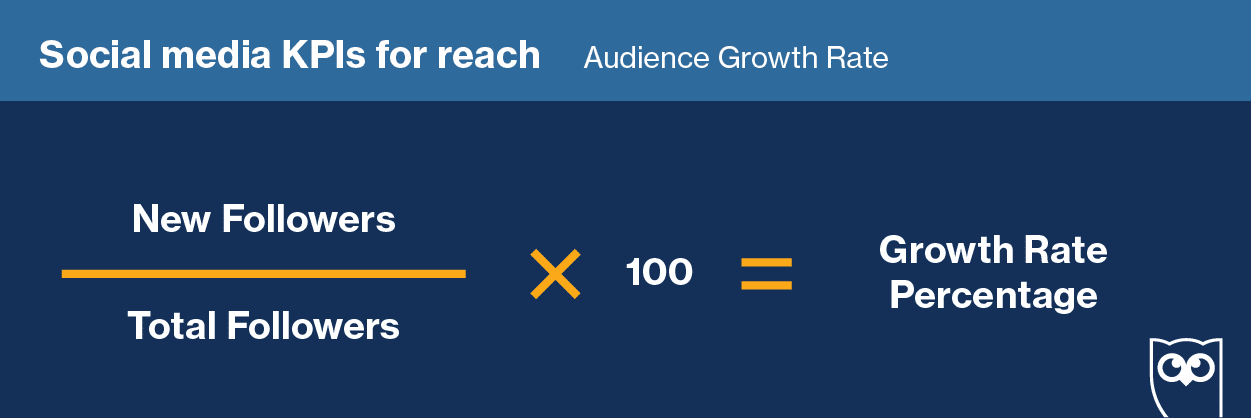
Reach
This is how many people have seen a post since it went live. Reach changes depending on when your audience is online and how good your content is. It gives you an idea of what your audience finds valuable and interesting.
Here's how to calculate it:
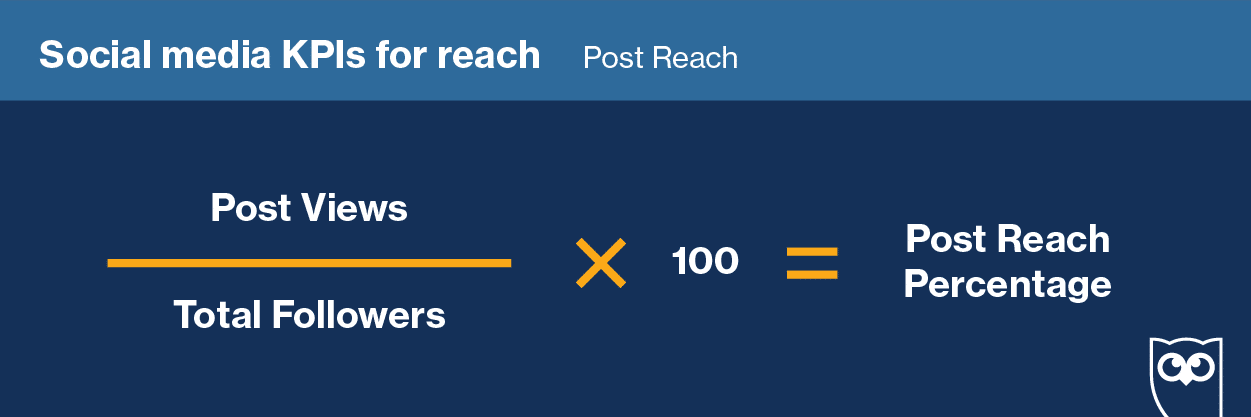
Potential reach
This measures the number of people who could see a post during a reporting period. Put another way, if one of your followers shared your post with their network, between 2% and 5% of their followers would factor into the post's potential reach.
Here's how to calculate potential reach:
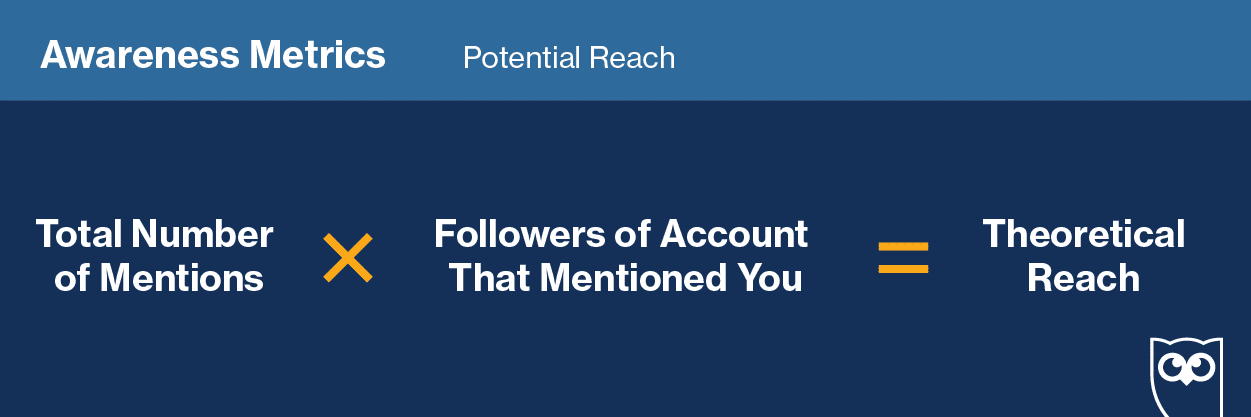
Social share of voice
This metric tracks how many people mentioned your brand, compared to the number of people mentioning your competitors. Simply, it shows how relevant your brand is within your industry. You can use a social listening tool like Hootsuite to measure your own and your competitors' mentions during a specific timeframe.
Here's how to calculate social share of voice:
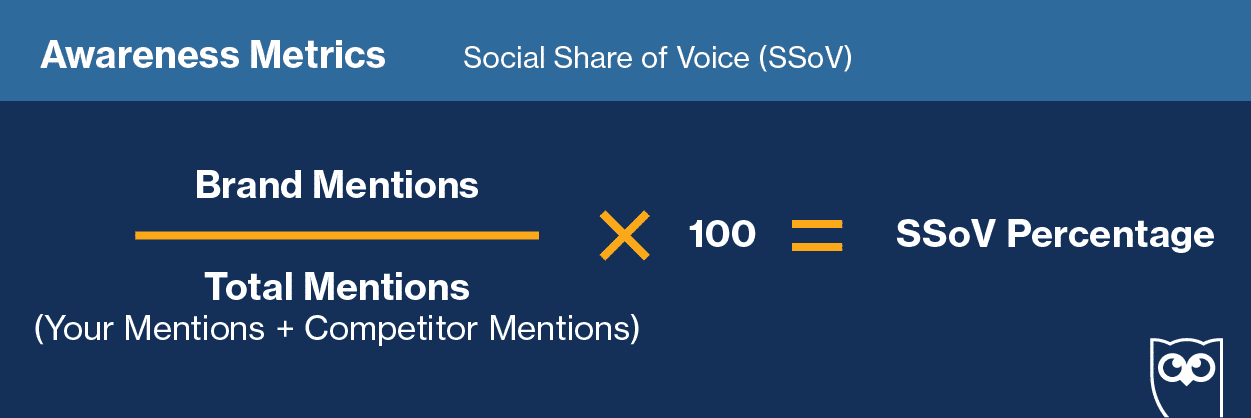
Social media engagement KPIs
KPIs for social media engagement measure the quality of the interactions with your social followers. They show you whether your audience is connecting with what you have to say and willing to interact with your brand.
Likes
The number of times followers interact with a social post by clicking the Like button within a given social media platform.
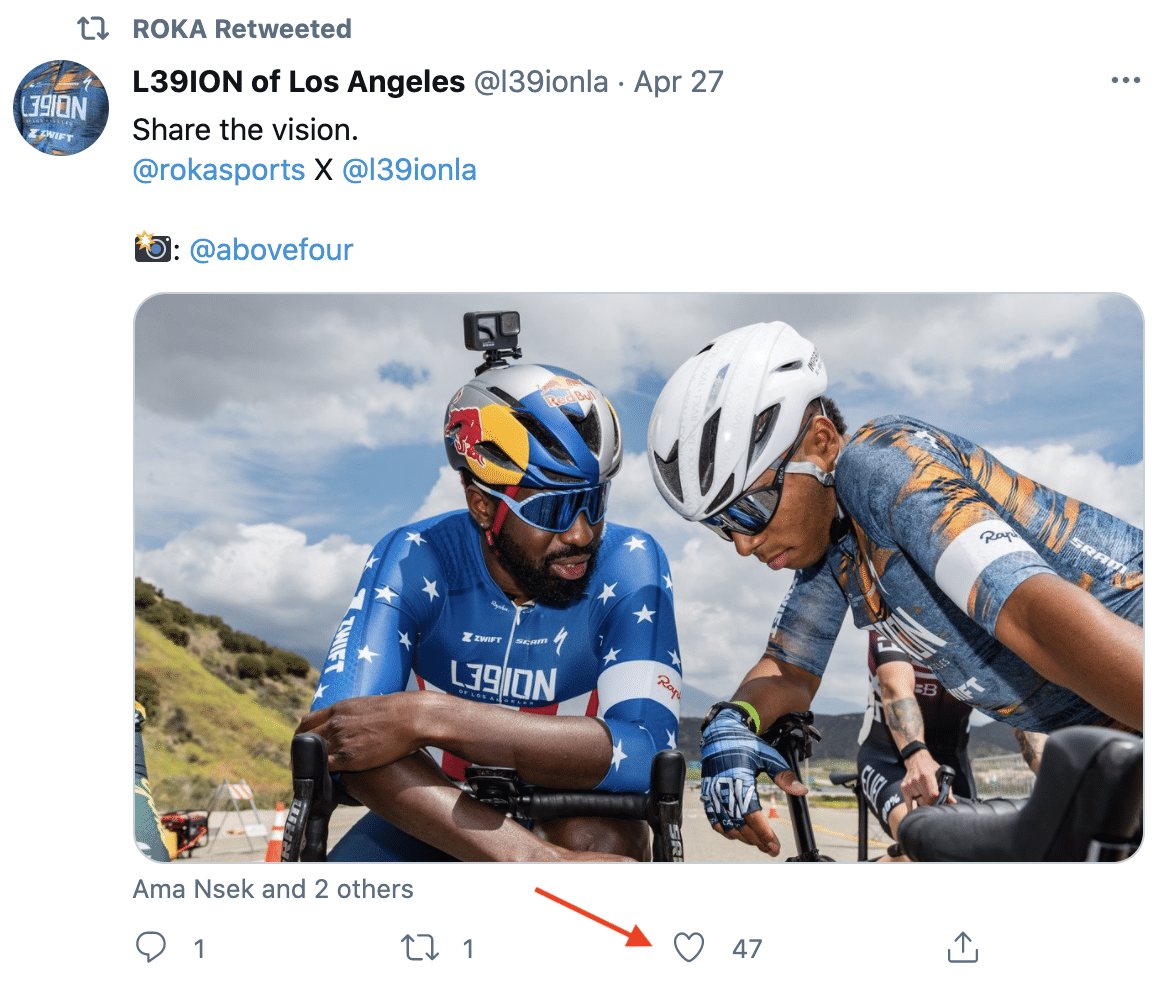
Comments
The number of times your followers comment on your posts. Remember: comments can have a positive or negative sentiment, so a high number of comments isn't always a good thing!

Applause rate
Applause rate tracks only positive interactions or approval interactions. This includes likes, saves, retweets, favoriting a post, etc.
Here's how to calculate applause rate:

Average engagement rate
This metric divides all the engagement a post receives — including likes, comments, saves and favorites — by the total number of followers on your social channel. It shows how engaging, on average, your piece of content was.
Here's how to calculate it:
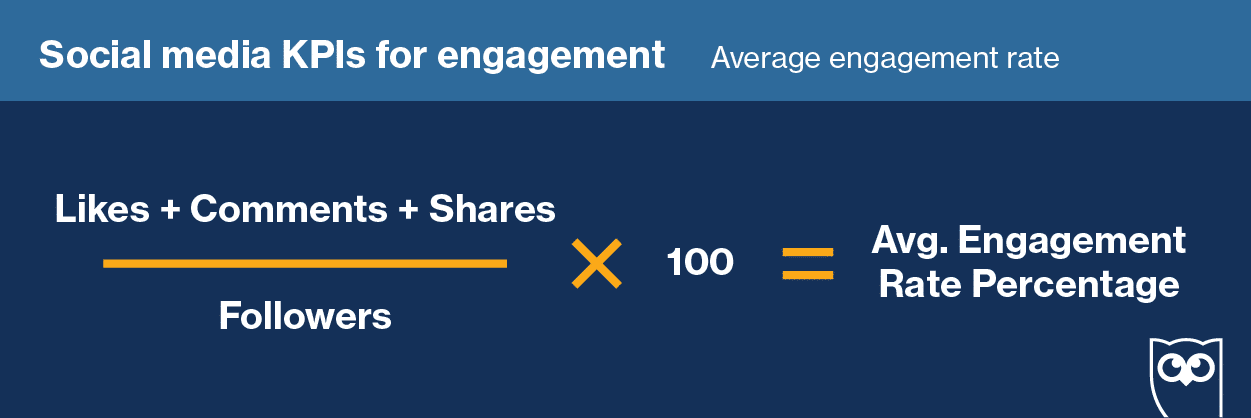
Amplification rate
This is the rate of your followers who are sharing your content with their own followers. This metric could include everything from shares and retweets, to repins and regrams. Basically, a high amplification rate shows that your followers want to be associated with your brand.
Here's how to calculate it:
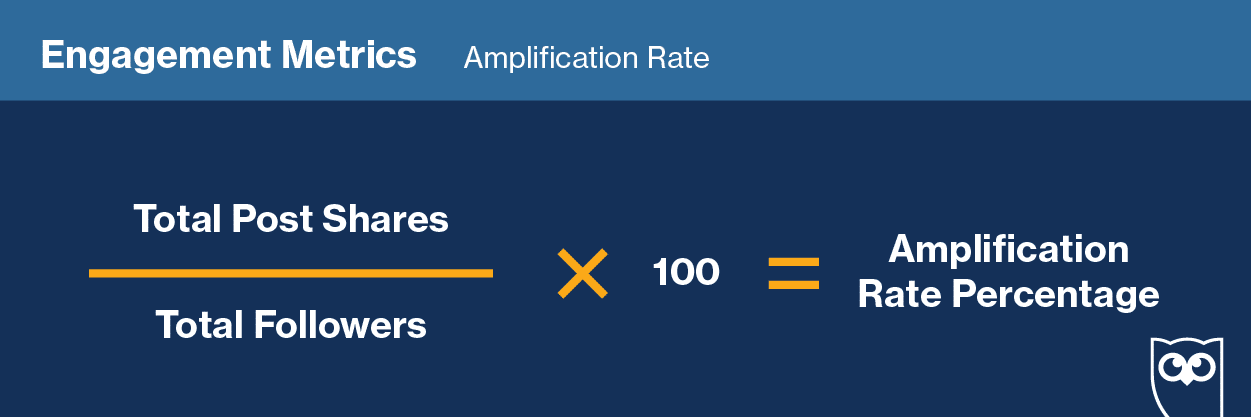
Conversion KPIs
Conversion KPIs measure how many social interactions turn into website visits, newsletter sign-ups, purchases or other desired actions. Conversion metrics reflect how effective your social media strategy is and whether it's leading to actionable outcomes.
Conversion rate
This is the number of users who perform the actions outlined in your social media CTA (visit your website or landing page, subscribe to a mailing list, make a purchase, etc.) compared to the total number of clicks on that given post. A high conversion rate shows that your social media post delivered something valuable to your audience that made them act!
Here's how to calculate it:
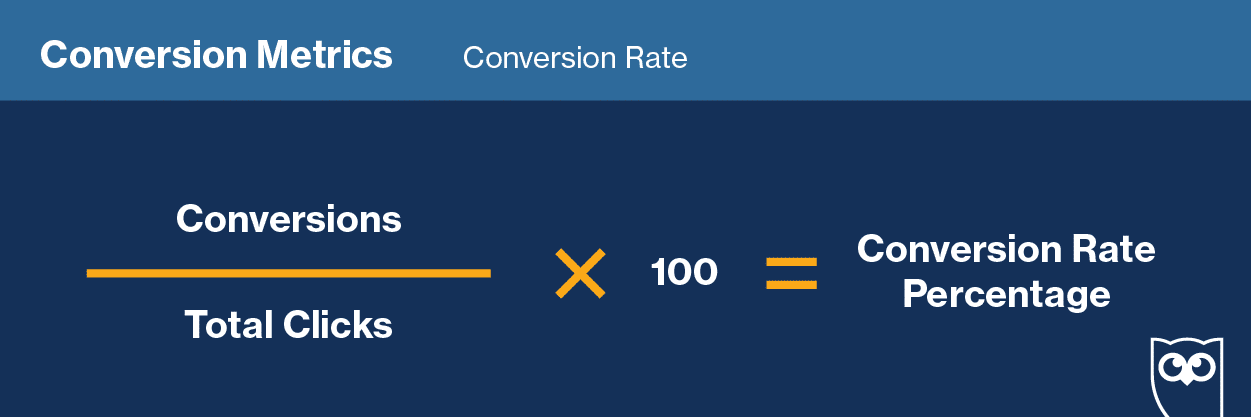
Click-through rate (CTR)
CTR is the percentage of people who viewed your post and clicked on the CTA (call to action) it included. This provides insight into whether your content captures your audience's attention and inspires them to act.
Here's how to calculate it: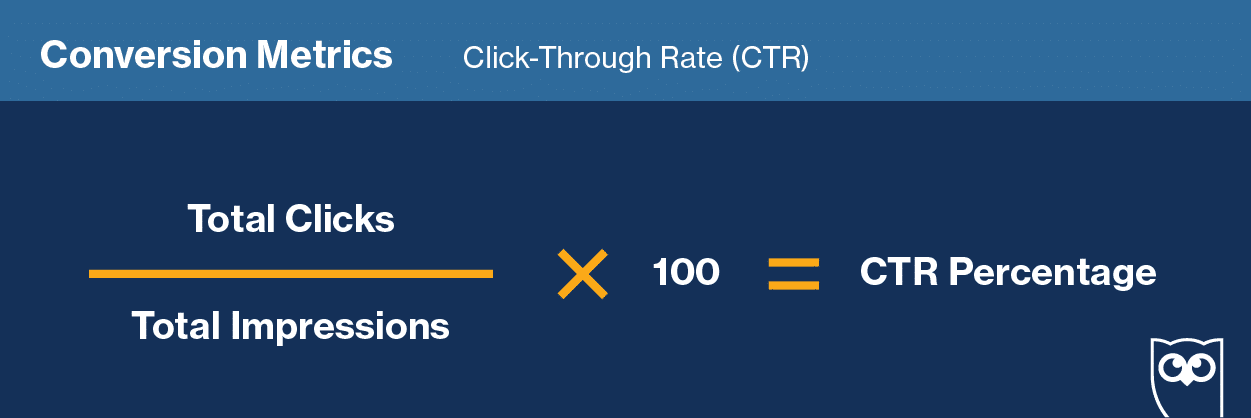
Bounce rate
Not everyone who clicks on your social media links will follow through, reading the full article you shared or completing a purchase. Bounce rate is the percentage of visitors who clicked on a link in your social post, but then quickly left that page without taking any action. You want this to be low — it signals your content isn't all that engaging, or the user experience you provided was less than perfect.
Cost per click (CPC)
CPC is the amount you pay social media platforms like Facebook, Twitter or Instagram per individual click on your sponsored social media post. Track this to see if the amount you're spending is a worthwhile investment.
Here's how to calculate it:
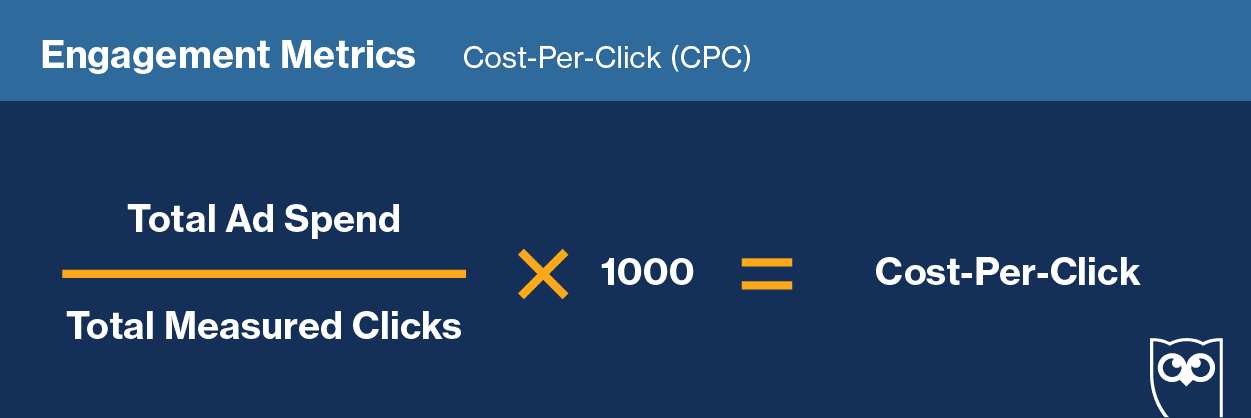
Cost per thousand impressions (CPM)
This is the amount you pay every time 1,000 people scroll past your sponsored social media post.
Here's how to calculate it:
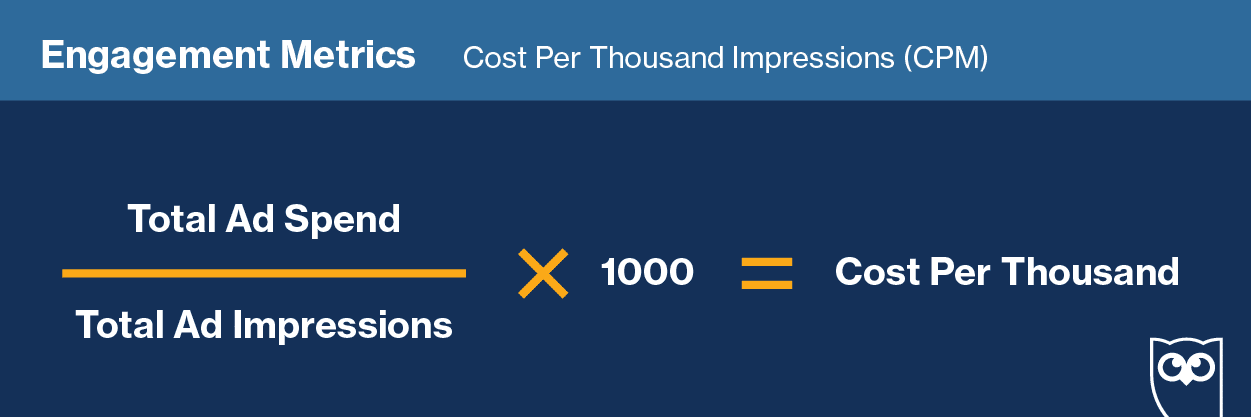
Customer satisfaction KPIs
Customer satisfaction KPIs are tracked to see how social media users think and feel about your brand. The sentiment of their interactions with your brand online is direct feedback for your business.
Customer testimonials
Reviews typed up by your customers and posted to social channels like Google My Business or Facebook reviews clearly demonstrate how customers feel about an experience or product. Star rating also provides a good snapshot of how customers feel about your business.

Customer satisfaction score (CSat)
This metric shows how happy your followers are with your brand's products or services.
You could collect this data through a Twitter poll or Facebook survey, for example, asking one simple question: How would you describe your overall satisfaction with this product? Depending on how you set up your poll, respondents would rate their satisfaction either numerically (e.g. on a scale from 1 to 10) or through descriptors like poor, average or excellent.
Net promoter score (NPS)
This metric measures your followers' brand loyalty. Using a poll or survey on your brand's social channels, ask one question: How likely would you be to recommend this product to a friend? Give respondents the chance to answer using a numerical scale or through descriptors like unlikely, likely or very likely.
Bonus: Get a free social media report template to easily track and measure performance against your KPIs.
Get the free template now!
Now that you know the important social media KPIs to track, how will you go about tracking them and reporting your successes?
There are a few ways:
Native solutions
Tracking social media KPIs natively — meaning, using the built-in analytics features of individual social media platforms — is one option. They're free, easy to use and can be a good option for social media managers who are only tracking KPIs for one or two social accounts.
Social media managers can track KPIs using Instagram Insights, Facebook Insights, Twitter Analytics, LinkedIn Analytics, YouTube Analytics, etc. All major social media platforms offer basic solutions for tracking social media performance.
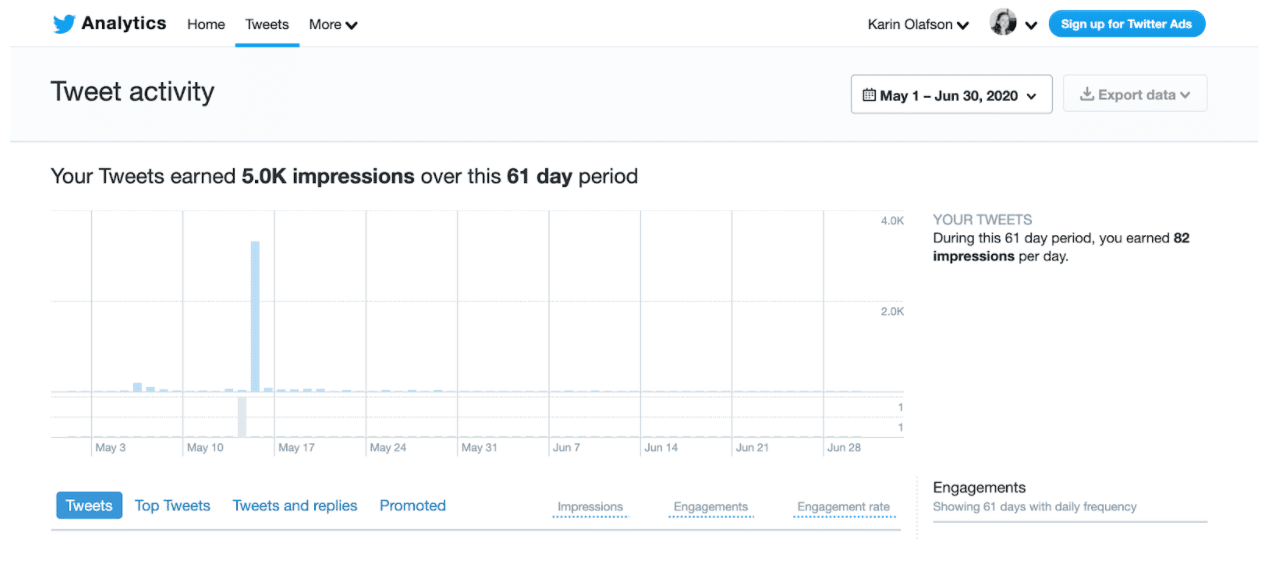
However, this method is not ideal for teams who manage several accounts across social networks. That's simply because tracking metrics from different sources requires switching between dashboards, which makes it more challenging to compile, compare and analyze results.
Custom reports
Custom reports involve compiling social media KPIs into a single easy-to-read document for your team and your supervisors.
To create one, manually input the data you collected across your brand's different social channels into one document. Make it visual and digestible. Be sure to include graphs, charts and examples to demonstrate how your work is meeting the brand's business goals and affecting the bottom line.
Interested in a custom report template? You can download our template here.
Bonus: Get a free social media report template to easily track and measure performance against your KPIs.
Hootsuite
If your brand's social media strategy involves managing multiple accounts on numerous platforms, using a social media management platform to track your KPIs will make your job easier.
Tools like Hootsuite make collecting, crunching and sharing data both efficient and effective. Hootsuite tracks performance analytics for all of your social channels and organizes the data into comprehensive analytics reports for you.
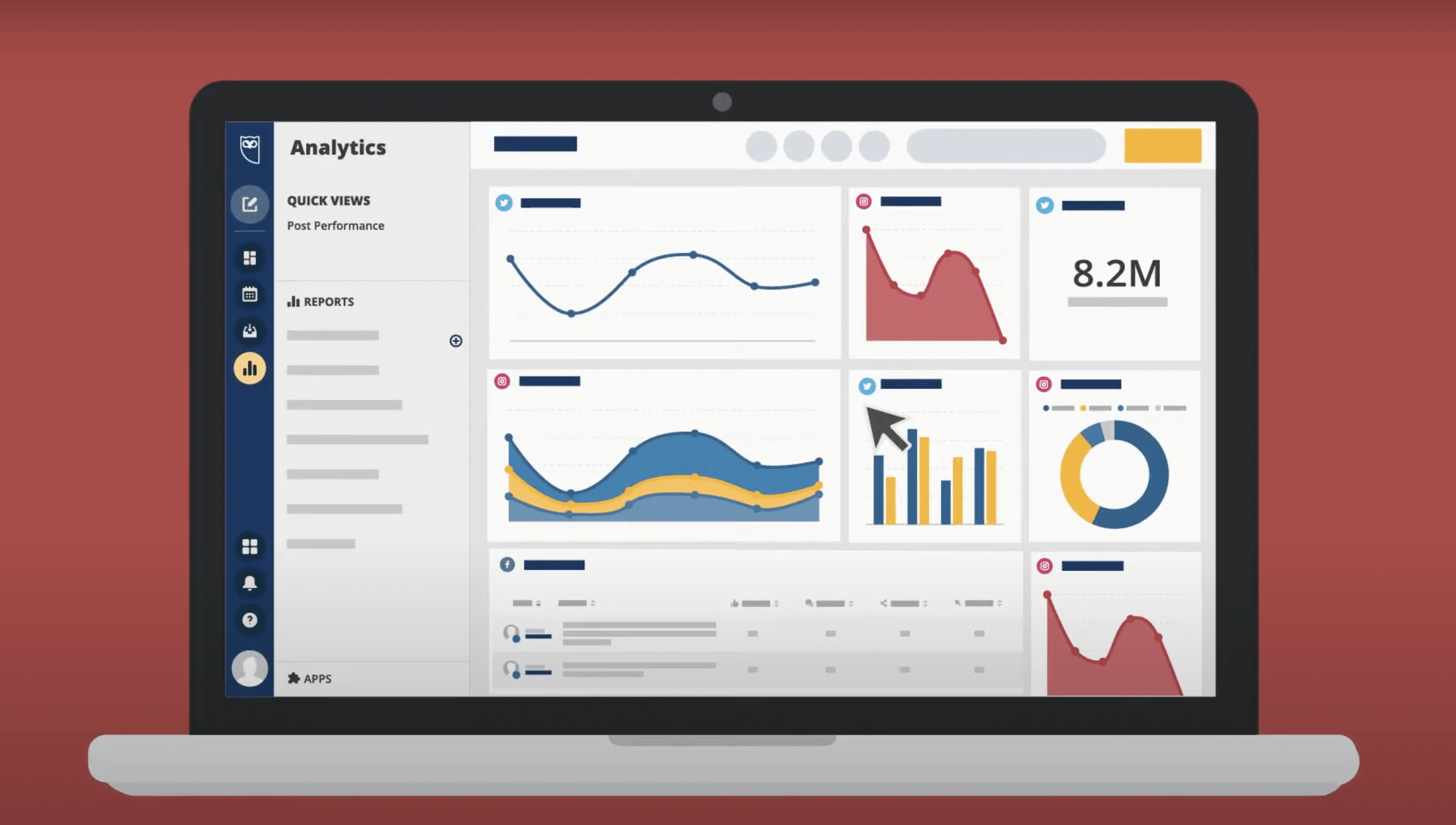
Source: Hootsuite
Hootsuite's analytics reports are fully customizable collections of data that showcase the data you need. You can create reports for individual social accounts or for all the social platforms your brand uses.
The interface is interactive — it doesn't require any manual data input, you can simply drag and drop all of the elements to arrange a unique report that will work for your needs.
To learn more about using reports in Hootsuite, watch our YouTube video:
Use Hootsuite to do all your social media reporting from a single dashboard. Choose what to track, get compelling visuals, and easily share reports with stakeholders. Try it free today.
Get Started
All your social media analytics in one place. Use Hootsuite to see what's working and where to improve performance.
Try it for Free
What Would You Set Up To Collect How Many Comments
Source: https://blog.hootsuite.com/social-media-kpis-key-performance-indicators/
Posted by: lambrightposix1941.blogspot.com

0 Response to "What Would You Set Up To Collect How Many Comments"
Post a Comment